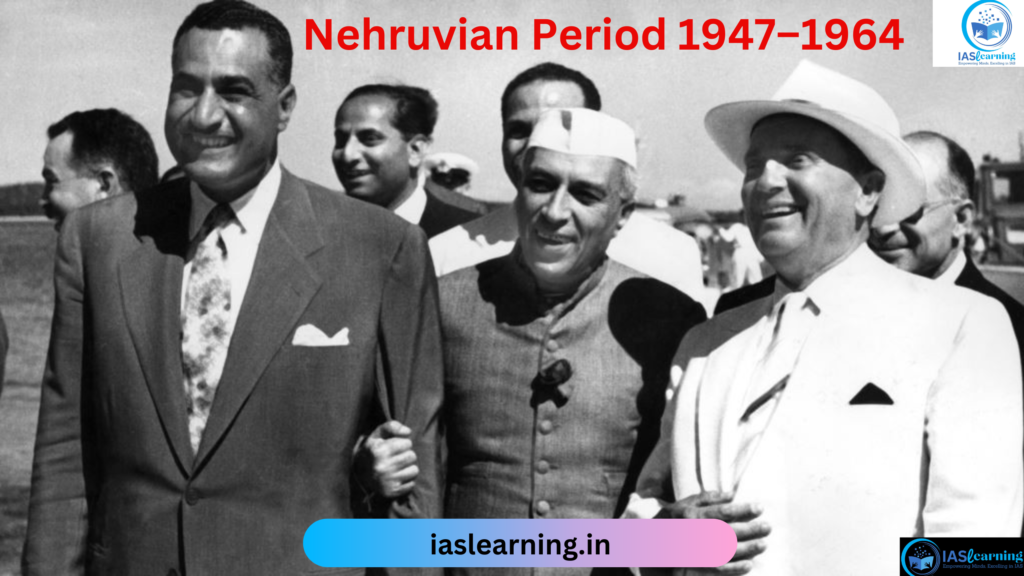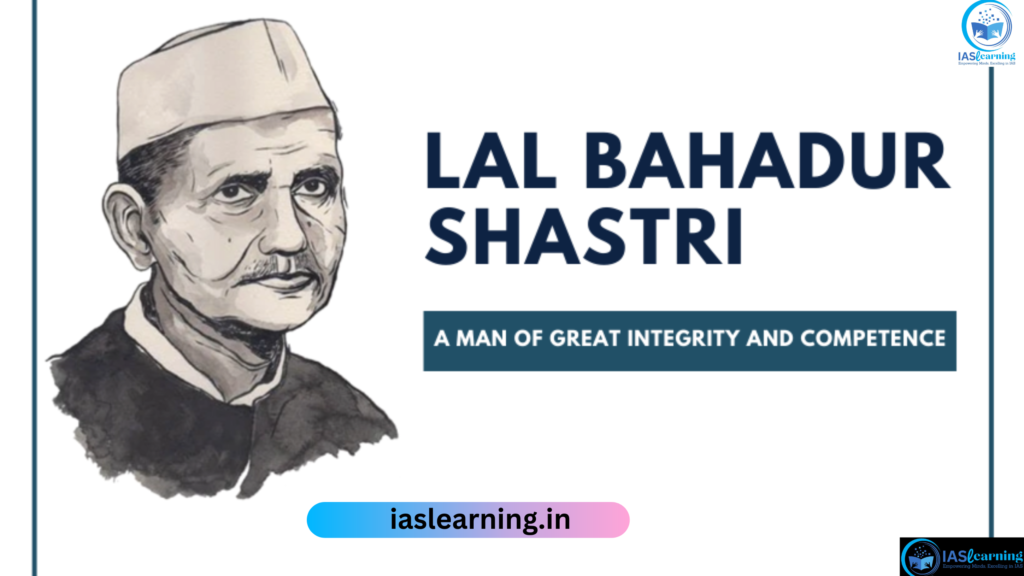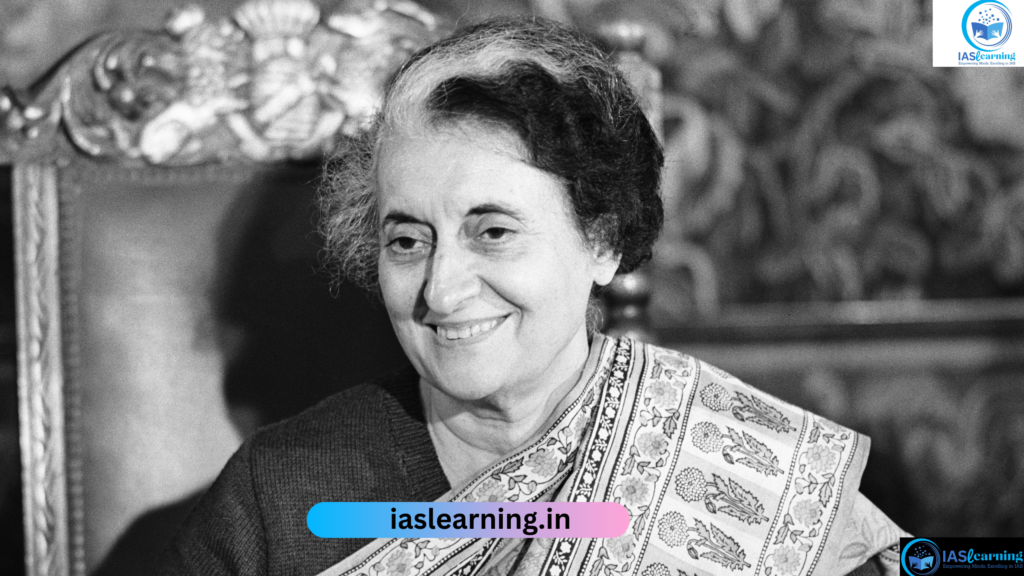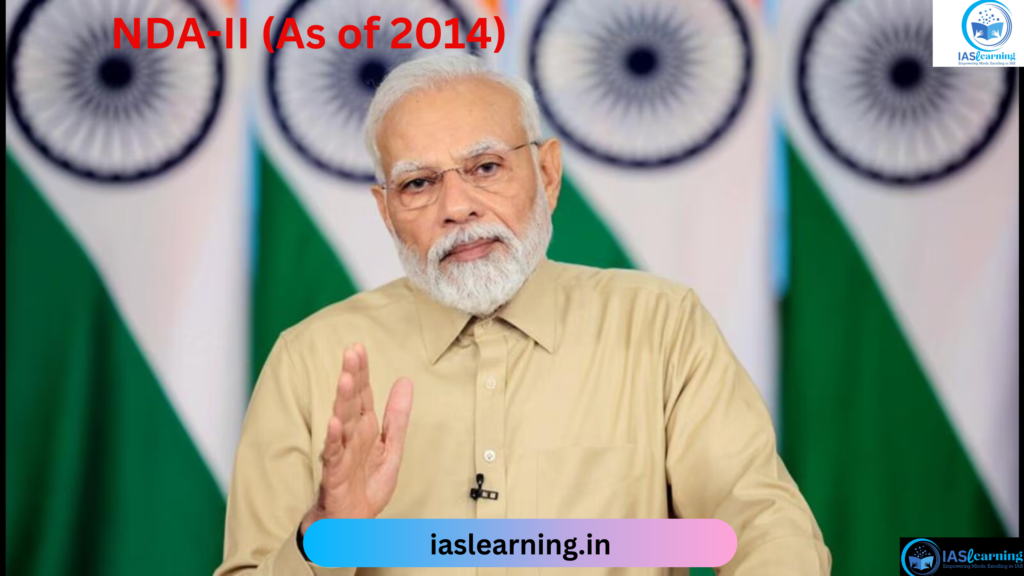How did India’s Foreign Policy originate into being?
Jawaharlal Nehru and other founding leaders, as well as the British, had a significant influence on India’s Early foreign policy.
Indian National Congress (INC) and pre-independence
India’s foreign policy before to independence was mostly set by the British government. Among its salient characteristics were:
- Sustaining British Interests: The two major objectives of India’s foreign policy were keeping cordial ties with other British colonies and advancing the British Empire’s interests.
- Limited Diplomatic Engagement: Since most diplomatic interactions between India and other nations were handled by the British administration, there was very little of it.
India’s foreign policy started to change in the early 20th century as the nation’s independence movement gathered traction.
- INC’s role was to rally international support for the independence struggle and to bring attention to the situation of India and other colonial nations.
- Promotion of India’s Interests: The leaders of the independence movement worked to strengthen India’s ties with other countries and advance its interests internationally.
Fore more : What is the concept of Nation and State?
What is Constitutionalism And Consitutional Morality
How has India’s foreign policy evolved over the years?
Nehruvian Period

1947–1964 saw the tenure of India’s first prime minister, Jawaharlal Nehru. During this period, his idea of an independent, democratic, non-aligned country influenced India’s foreign policy.
- Partition and freedom: India was divided into Pakistan and India after gaining its independence. As a result, there was a large-scale movement of Muslims and Hindus across the border, which heightened tensions and sectarian bloodshed between the two nations.
- The Five Principles of Panchsheel: It served as a set of guidelines for international relations, especially during the Cold War and the process of decolonization.
- Respect for each other’s sovereignty and territorial integrity was one of the guiding principles.
- exchange of non-aggression.
- mutual refraining from meddling in internal matters.
- equality as well as reciprocity.
- Peaceful coexistence.
- Membership in the UN: India joined the UN as one of its founding members in 1945 and has since been actively involved in its decolonization and disarmament efforts.
- Non-Aligned Movement (NAM): Nehru had a significant role in the formation of the NAM, an organization that aimed to foster friendship and cooperation amongst nations that were not affiliated with a major geopolitical bloc.
- The Sino-Indian War: In 1962, a short border skirmish broke out between China and India over disputed territory in the Himalayas. India’s priorities of military development and fortifying strategic partnerships were redirected by the battle.
- The Soviet Union and India’s relationship: Under Nehru’s leadership, India established strong political and economic links with the Soviet Union, which eventually became one of its primary sources of foreign aid and military assistance.
The period of Shastri

In India, Lal Bahadur Shastri served as prime minister from 1964 to 1966.
- The Indo-Pakistan War of 1965 was sparked by long-standing hostilities between Pakistan and India about the disputed territory of Kashmir.
- The Tashkent Declaration, which called for an end to hostilities and the restoration of diplomatic relations between the two nations, was signed by the two presidents when they met in Tashkent, USSR (now Tashkent, Uzbekistan) during the War of 1965.
- Soviet Union-India relations: India received a lot of military support and foreign aid from the Soviet Union during this period.
- Program for Public Law 480 (PL 480): The USA gave food aid to nations on a concessional basis under the PL 480 program. India received food aid from the United States under the PL 480 program in the 1960s.
The time of Indira Gandhi

India’s prime minister, Indira Gandhi, held the position from 1966 to 1977 and again from 1980 to 1984.
- Indo-Pakistan War: Tensions between India and Pakistan over the disputed area of East Pakistan led to the outbreak of the Indo-Pakistan War in 1971. Bangladesh was created as a result of India’s intervention on behalf of the rebel Bengalis. India’s standing as a regional power was cemented by the war, which had a significant effect on the balance of power in South Asia.
- The Indo-Soviet Treaty of Friendship, Cooperation, and Peace (1971–1991): It was an agreement between the Soviet Union and India on friendship and cooperation. It was signed in 1971, right in the middle of the Indo-Pakistan War.
- The pact restated the two nations’ strong political and economic relations. It had clauses pertaining to reciprocal defense and support in the event that any nation was threatened externally.
- Nuclear Tests: 1974 saw India carry out nuclear tests known as “Smiling Buddha,” which elevated the nation to the sixth rank in the world’s nuclear weaponry and aroused concerns around the globe about the spread of nuclear weapons throughout South Asia.
- She was also instrumental in the founding of the South Asian Association for Regional Cooperation (SAARC) in 1985, an organization aimed at fostering collaboration between South Asian nations.
The period of Rajiv Gandhi
India’s Prime Minister from 1984 to 1989 was Rajiv Gandhi.
- Relations between India and the Soviet Union: The Soviet Union supported India militarily and economically throughout this period, being a vital ally.
- Civil war in Sri Lanka: The Sri Lankan government requested India’s military intervention in the fight in 1987, and India subsequently helped to arrange the conclusion of the Indo-Sri Lanka Peace Accord in 1989, which ended the civil war.
- The 1985 Air India bombing: The war between the Indian government and Sikh separatists in the state of Punjab saw a significant uptick following this terrorist assault carried out by Sikh separatists.
- Economic changes carried out by Rajiv Gandhi liberalized India’s economy and made it more accessible to greater foreign investment.
Fore more : American Revolution 1776, History, Causes, Timeline and its Impacts
History of the World Before 18th Century
In the 1990s
India’s foreign policy in the 1990s was typified by an emphasis on building ties with the US and other Western nations as well as economic reform.
- Reforms related to LPG (Liberalization, Privatization, and Globalization): The primary modifications arising from the LPG reforms were a heightened focus on economic diplomacy. In addition to focusing on developing economic links with other nations through trade agreements, investment accords, and other efforts, it led to an opening up to international investment and commerce.
- Gujral Theory: It was a set of five guiding principles to govern India’s foreign policy dealings with its near South Asian neighbors.
- Non-reciprocity with neighbours.
- Territory should not be used against the interest of another country.
- Non-interference in internal affairs.
- Respect each other’s territorial integrity and sovereignty.
- Settle all disputes through peaceful bilateral negotiations.
- Look East strategy: India established the “Look East” strategy in 1991 with the goal of fostering closer political and economic relations with Southeast Asian nations.
- 1998 Nuclear Tests: Following a string of nuclear tests, India faced international sanctions and strained ties with the US and other nations.
- WTO Participation: India’s 1995 admission to the World Trade Organization (WTO) was another significant development. India was able to expand commerce with other nations and liberalize its economy as a result.
NDA-I (1998–2004)
From 1998 till 2004, the NDA-1, under by Prime Minister Atal Bihari Vajpayee, ruled.
- Pokhran-II: India’s standing as a nuclear power was cemented by the 1998 Pokhran-II nuclear tests, which also resulted in international sanctions against the country.
- Kargil War: 1999 saw the start of the Kargil War, a military confrontation between India and Pakistan in the Jammu and Kashmir area. A cease-fire and the evacuation of Pakistani soldiers from Indian territory marked the end of the battle.
- Relations between India and the US: Relations between the two nations significantly improved during President Bill Clinton’s 2000 visit to India.
UPA-I and II (2004-2014)
From 2004 until 2014, Prime Minister Manmohan Singh’s UPA administration held power.
- The 2008 Indo-US 123 Nuclear Agreement put an end to India’s nuclear isolation and opened the door for US collaboration in the civil nuclear industry.
India-China Relations: The closer ties with China, which include the signing of a border defense cooperation pact in 2013 and the formation of a strategic and cooperative relationship in 2005.
Land Border Agreement with Bangladesh: In order to settle the long-running border issue with Bangladesh, 162 enclaves were exchanged between the two nations in 2014. - Look East strategy: The government worked to fortify relations with nations in Southeast Asia and the Asia-Pacific area through the “Look East” strategy.
- The Association of Southeast Asian Nations (ASEAN) and India inked a free trade agreement in 2010 with the goal of promoting investment and commerce between the two areas.
- UN Security Council Reforms: In an attempt to strengthen India’s position internationally, the government vigorously pushed for India to be granted a permanent seat on the UN Security Council.
NDA-II (As of 2014)

India’s foreign policy under Prime Minister Narendra Modi’s National Democratic Alliance (NDA) administration has been characterized by an emphasis on forging closer connections with nations in the Indo-Pacific area in addition to initiatives to fortify ties with long-standing allies like the US and Russia.
- The “Neighborhood First” program, implemented by the government, is designed to fortify ties with nations situated in South Asia and the Indian Ocean area.
- Act East Policy: Through increasing trade and investment, cultural exchanges, and infrastructure development, it seeks to strengthen strategic and economic relations with nations in the Indo-Pacific region.
- Membership in the Shanghai Cooperation Organization (SCO): China, Russia, Kazakhstan, Kyrgyzstan, Tajikistan, and Uzbekistan are the other members of this regional security alliance, which also includes India and Pakistan as full members.
- India-United States Strategic Partnership: It has advanced recently and involves collaboration on a range of topics, including as energy, commerce, defense, and counterterrorism.
- Commitments to sustainable development: One of the biggest developments in India’s foreign policy has been the country’s involvement in the Paris Climate Agreement and its pledge to cut greenhouse gas emissions and increase the usage of renewable energy.

